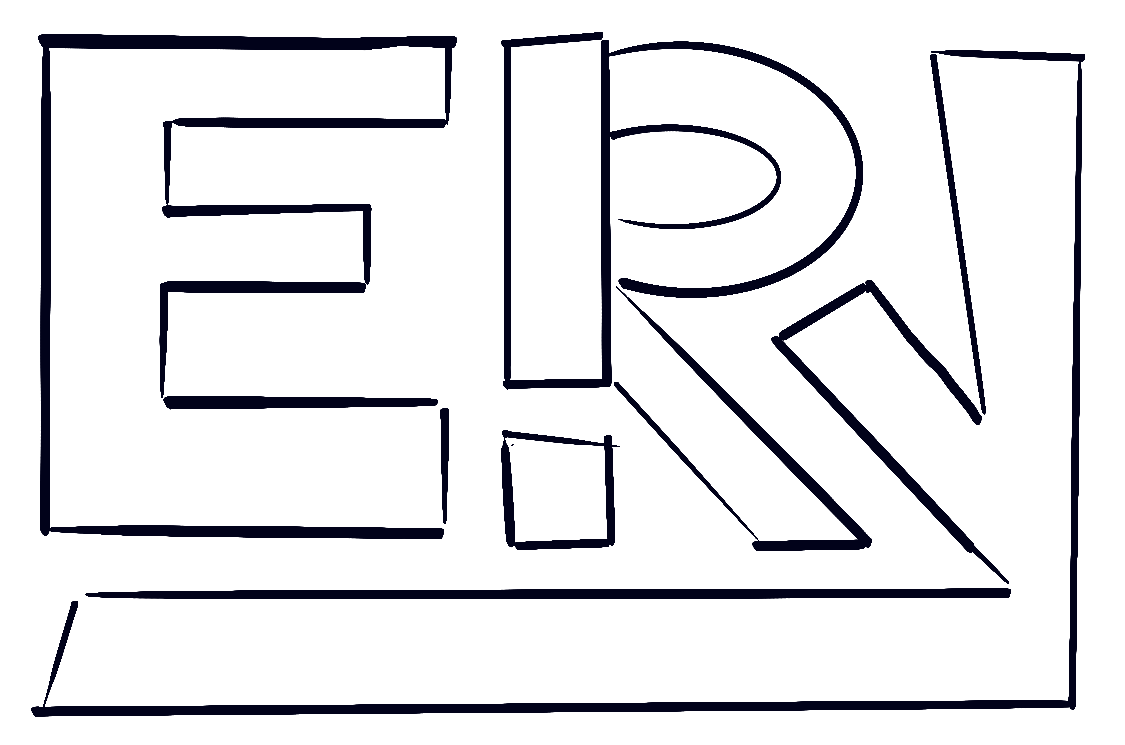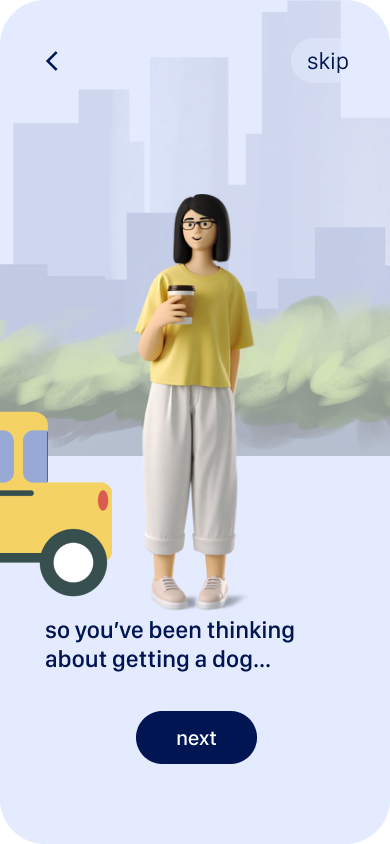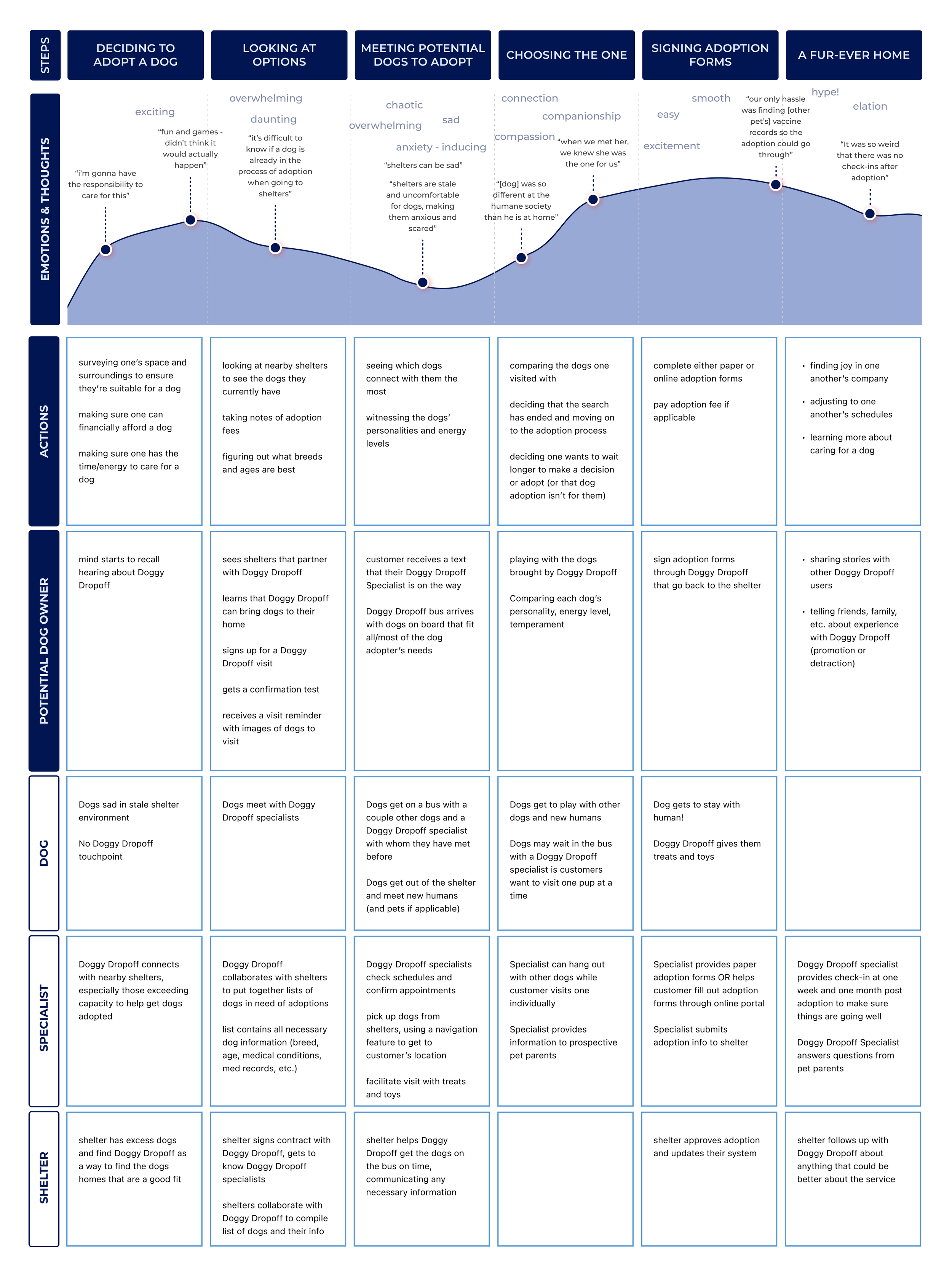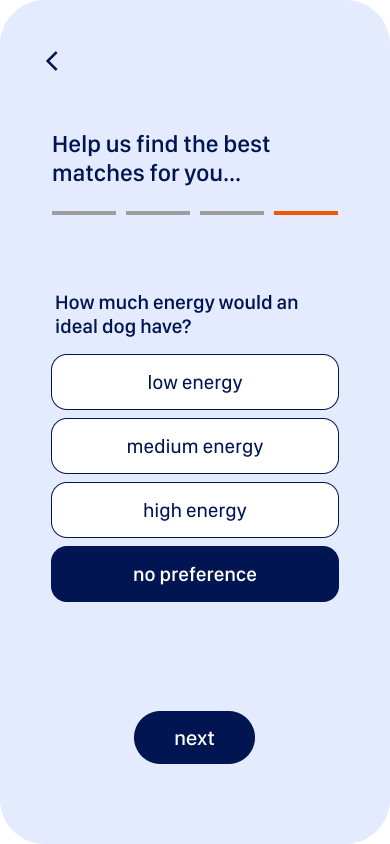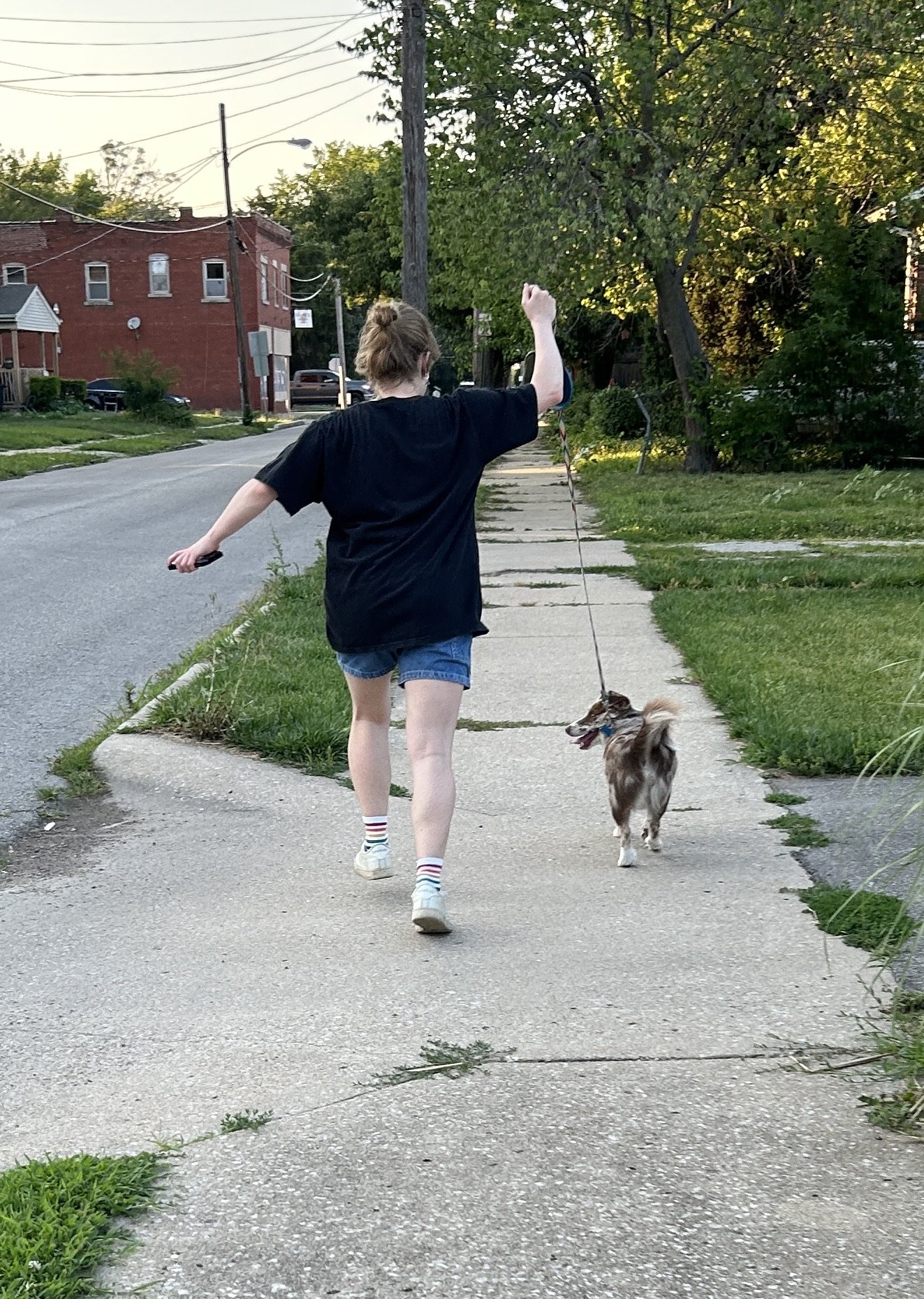Doggy Dropoff
Urban Dog Adoption on Wheels
Project Overview
Doggy Dropoff provides a solution to challenges urban dwellers face in the dog adoption process. Recognizing the limitations of traditional adoption methods, this case study delves into the design process, key user insights, and the development of Doggy Dropoff.
My Roles: UX research, product design, service design
Duration: 1 month
Type: Solo Capstone
The Challenge
With current options, people residing in urban areas do not have the best information to adopt a dog.
The Solution
Doggy Dropoff brings shelter dogs to visit you at your home.
Doggy Dropoff, a service that brings dogs to you, stands alongside typical models of dog adoption by connecting folks living in urban areas with shelters in and around town to help people find their fur-ever friend a fur-ever home.
What does the adoption process currently look like?
Where’s the disconnect?
I interviewed five participants about their experiences with dog adoption so that I could find issues specific to people living in urban spaces.
Qualifying criteria were:
the person lived in an urban area (within city limits) and
this person had been through the dog adoption process or was open to dog adoption.
Key Issues
Uninformative Pet Profiles & Stale Shelters
Online profiles lacked crucial information, leaving adopters uncertain about a dog's suitability.
“My dog’s profile didn’t have anything. Just his name, photo, and a breed speculation, no specifics.”
“He was a completely different dog from the guy in the shelter room.”
Lack of Shelter Accessibility
Urban residents lacked convenient transportation to shelters.
In some cities, such as New York, NY, fewer than 50% of the population owns a car.
Many people find it strange to take home a dog on public transit, especially if unfamiliar how the dog will react.
Time-consuming Nature
The adoption process was laborious, involving extensive travel and endless online and in-person searches.
“It’s time-consuming to go to a shelter without knowing if an adoption will work out.”
“She threw up in the car on the way home from adopting her - which was a 2.5-hour car ride - so being able to eliminate that step would be a game changer.”
Creating a genuine connection
While focusing on a genuine connection, I came up with a wide range of ideas. Some of these ideas included
a game like Nintendogs where one could understand the dog
notifications on phone/watch that prompt what this hypothetical dog would need at each point in the day
What if dogs and humans connect in a place both could call home?
I shared the following storyboards with my qualitative interview participants and asked for their feedback.
The idea focused on having prospective pet parents and dogs from local shelters meet at people’s homes, facilitated through a “Doggy Dropoff Specialist.” The specialist would make sure the visits run smoothly and aid in the process of filling out adoption paperwork.
People were excited about this service, I just had to figure out how to connect all parties, prospective pet parents, dogs, and shelters, in a way that was beneficial for each.
Meeting needs at each step
Connecting people through a scheduling platform
Key Features of the platform include:
Vetting Location
Doggy Dropoff is only available to those within areas of shelter partners. Because of this, users will need to fall within a certain range to begin any more lengthy steps.
Checking off application boxes
These steps are necessary to any adoption process, so why not complete them first? This prevents wasted time and ensures compatibility.
Setting preferences
Almost everyone has preferences when it comes to choosing a dog to adopt. Doggy Dropoff gives people the option to state these preferences while not promising they can for sure fulfill these things. Many of those interviewed said they had some preferences, but ultimately the pet they adopted did not check every box.
SMS updates keep people in the know
Since Doggy Dropoff scheduling takes place through a responsive website rather than an app, this keeps users informed in the meantime. Most folks won’t download an app for a single transaction, so this is the way to stay in contact with users.
It took a few tries
There were many ways I could’ve designed this service. Follow along as I reconstruct some user flows to prevent wasted time and keep the user engaged.
Minimizing steps & missing key elements
At first, I tried to have as few steps as possible. I thought I could minimize steps for simplicity, but I was missing some key elements to prevent users from wasting their time.
Adding adoption requirements
I added in some elimination steps. If users didn’t have services in their area or meet standard qualifications for dog adoption, they would be sent to a page telling they why they didn’t qualify and what they could do about it.
Getting to the point
This third iteration shows the “schedule my appointment” option only to users who qualify. This once again prevents those who don’t qualify for adoption from wasting their time.
Designing for Efficiency
Scheduling iteration 1 left too many options.
I thought users would like to pick time by the half hour, but this left too many options and required including a description to inform the users of visit times.
Scheduling Iteration 2 gives users what they need in a straightforward layout.
After some thought, iteration 2 is a much smoother option for users. They are able to see the time range for appointments instead of just the start time, having to read the description and do the math to work this into their schedule.
How’d Doggy Dropoff do?
After much research, iteration, more research, and more iteration, I conducted usability testing with 5 potential users of Doggy Dropoff. The results were great, with 100% of participants saying they’d be very likely or extremely likely to recommend this product to a friend.
NPS
100
n=5Furthermore, I asked participants “based on your interaction with our app, how likely are you to use our product again?”
To which 100% of participants responded they’d be extremely likely.
Praise for Doggy Dropoff
“It’s nice because the dog gets to come to your home. It’s more comfortable than a stale room at a shelter where the dog is sad and scared.”
“If Doggy Dropoff were an option when we were in the dog adoption process, we would have used it.
Heck, we’d use it to adopt a second dog if it’s ready by then!”
“If we would’ve had the option to meet [dog’s name] at our apartment, we would have done it.”
Takeaways
Trusting the messy process
The design process here emphasized continuous refinement of ideas, flows, and interfaces. Eliminating unnecessary information and incorporating user feedback were vital. This iterative and messy process ensured a solution that effectively addressed issues for city dog adopters.
The result is a user-centric solution set to improve the dog adoption landscape for urban residents.
